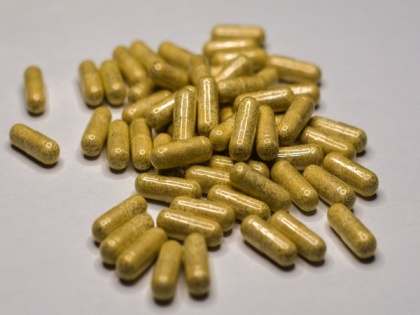Study finds new way to develop safer opioids
By ANI | Published: January 1, 2022 04:32 PM2022-01-01T16:32:13+5:302022-01-01T16:40:07+5:30
A team of researchers have designed a new opioid to bypass the part of the brain that feels pleasure, but retain the analgesic properties, which make opioids one of the most effective pain relievers.

Study finds new way to develop safer opioids
A team of researchers have designed a new opioid to bypass the part of the brain that feels pleasure, but retain the analgesic properties, which make opioids one of the most effective pain relievers.
The study has been published in the 'Nature Journal'.
"We identified a major source of how mu-opioids mediate reward," said lead author Daniel Castro, acting instructor in anesthesiology and pain medicine at UW Medicine and part of The Bruchas Lab, which examines how neural circuits affect motivated behaviours.
"We provided a blueprint of how the system works," he added.
They studied a part of the brain called the nucleus accumbens, a key region in the reward circuit of the brain. When we do anything that is considered rewarding, dopamine neurons project to this area of the brain and make us feel good and want more.
"Mu-Opioids, like morphine act on specific receptors in the brain, like keys in a lock," said Michael Bruchas, UW professor of anesthesiology and pain medicine.
"We isolated a new brain pathway where these receptors exert powerful effects to promote reward consumption behaviour," he added.
They found that opioid receptors are in a part of the brain called the dorsal raphe nucleus located towards the back of the brain by the brain stem. They acted to alter the communication between the raphe and nucleus accumbens, which are in the front of the brain.
"This finding was pretty unexpected," said Castro.
Bruchas said prior work had focused solely on how mu-opioid receptors alter dopamine transmission.
To create safer opioids, pharmaceutical companies would need to either bypass or create ways to bias the drug's effect away from the dorsal raphe to nucleus accumbens pathway, Castro said.
The researchers focused on the opioid peptide receptor MOPR. When stimulated, MOPR altered respiration; analgesia, reward behaviourd, and can induce substance abuse and overdose. This is the most common opioid peptide receptor engaged by opioid pain killers and opiates which are abused. Altering its function can cause agonizing withdrawal and promotes further abuse. This is why people can become unable to abstain from using drugs like heroin or morphine.
Researchers were able to make this discovery by using very modern neuroscience tools and pharmacology. The tools included in vivo calcium imaging, CRISPR Cas-9 (a technique that won the 2020 Nobel Prize), fluorescent in situ hybridization and optogenetics, an approach that has revolutionized neuroscience.
The study opened many new avenues for more discovery on what other behaviours the system mediated or moderated, providing potentially new avenues for opioids or other drugs, which relieve pain.
Meanwhile, the opioid epidemic has been going on for more than 20 years. The first wave began with increased prescribing of opioids in the 1990s, with overdose deaths involving prescription opioids. The second wave began in 2010, with rapid increases in overdose deaths involving heroin, and now we are in the third wave of synthetic opioids.
According to the Centers for Disease Control, overdose deaths involving opioids, including prescription opioids, heroin, and synthetic opioids (like fentanyl), have increased over six times since 1999. Overdoses involving opioids killed nearly 50,000 people in 2019, and nearly 73 per cent of those deaths involved synthetic opioids. The Bruchas Lab along with their colleagues in the UW Center for the Neurobiology, of Addiction, Pain and Emotion are actively pursuing the science behind new treatments for drug abuse and mental health disorders.
( With inputs from ANI )
Disclaimer: This post has been auto-published from an agency feed without any modifications to the text and has not been reviewed by an editor
Open in app